Quincy Jones: His brilliance explained in 10 songs
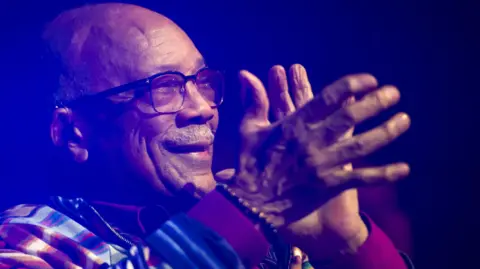 EPA
EPA“Music is sacred to me,” Quincy Jones once said. “Melody is God’s voice.”
He certainly had the divine touch.
Jones, who had died at the age of 91, was the right-hand man to both Frank Sinatra and Michael Jackson, and helped to shape the sound of jazz and pop over more than 60 years.
His recordings revolutionised music by crossing genres, promoting unlikely collaborations and shaping modern production techniques.
Here are 10 songs that showcase his versatility and brilliance in the studio, and his ability to draw the best out of the musicians he worked with.
1) Michael Jackson – Billie Jean
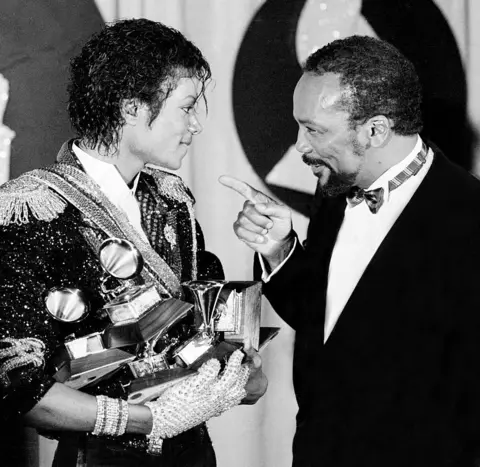 Getty Images
Getty ImagesMichael Jackson met Quincy Jones on the set of the 1978 movie The Wiz, and asked him to produce his next album. That record was Off The Wall – a disco extravaganza that established Jackson as a solo star.
They teamed up again for 1982’s Thriller, which arguably remade the pop business. Not only did it produce seven top 10 singles; but it crossed racial barriers, appealing equally to black and white audiences.
Key to the success was Billie Jean, a dark tale about the groupies Jackson met while touring with his brothers. As a producer, Jones wasn’t keen on the track at first – arguing with Jackson about the long instrumental opening.
“I said, ‘Michael we’ve got to cut that intro,’” he later recalled.
“He said, ‘But that’s the jelly! That’s what makes me want to dance.’ And when Michael Jackson tells you, ‘That’s what makes me want to dance,’ well, the rest of us just have to shut up.”
With those words ringing in his ears, Jones kept the arrangement lean and funky. He even instructed sound engineer Bruce Swedien to create a drum sound with a “sonic personality” that no-one had ever heard before. The result is one of the most recognisable intros in the history of pop.
2) Frank Sinatra – Come Fly With Me (Live at The Sands)
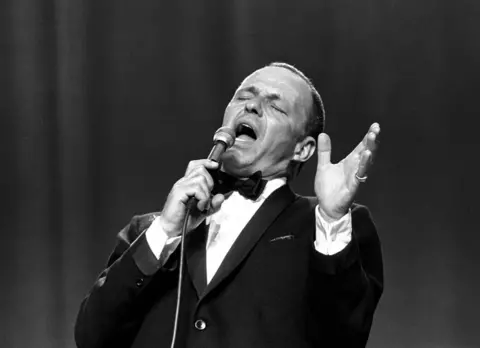 Getty Images
Getty Images“The friendship was so strong. You can’t describe it,” said Jones of his partnership with Frank Sinatra – which extended far beyond the recording studio.
“Seven double Jack Daniels in an hour… [Sinatra] invented partying.”
After establishing their relationship on 1964’s It Might As Well Be Swing, Jones helped Sinatra re-arrange his signature songs for a four-week engagement at the Copa Room in The Sands hotel, Las Vegas.
“It was probably the most exciting engagement I have ever done in my life, since I started performing,” Sinatra later recalled.
Accompanied by the Count Basie Orchestra, the star sounds perfectly at ease, breezing around standards like I’ve Got You Under My Skin, Fly Me To The Moon and You Make Me Feel So Young.
But it’s Come Fly With Me that most perfectly captures the vigorous energy of Jones’s new arrangements. No wonder that it was chosen as the opening number – as captured on the award-winning live album, Sinatra At The Sands.
3) Lesley Gore – It’s My Party
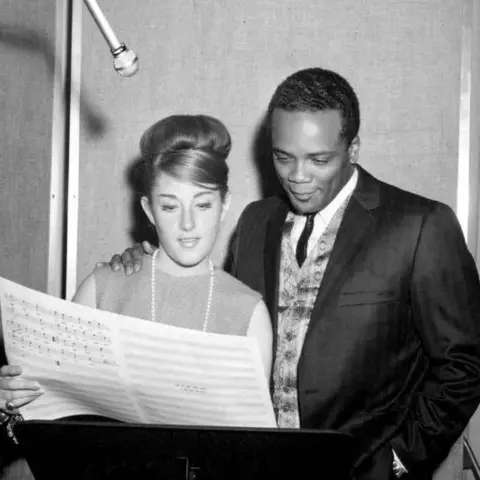 Getty Images
Getty ImagesLesley Gore was just a teenager when her vocal demos made their way into Quincy Jones’s hands in the early 1960s. Up to that point, he’d been working with jazz singers like Sinatra and Sarah Vaughan – but he heard something he liked on Gore’s tape.
“She had a mellow, distinctive voice and sang in tune, which a lot of grown up rock ‘n’ roll singers couldn’t do, so I signed her,” he wrote in his autobiography.
For their first session, Jones picked It’s My Party out of a pile of 200 demos and got to work. He double-tracked Gore’s voice, adding little flourishes of brass and unexpected chord changes that perfectly evoke the song’s adolescent angst.
He then rush-released the single, after discovering that Phil Spector had plans to record the same song with the Crystals. It duly topped the US charts and went to number nine in the UK.
4) Quincy Jones – Summer In The City
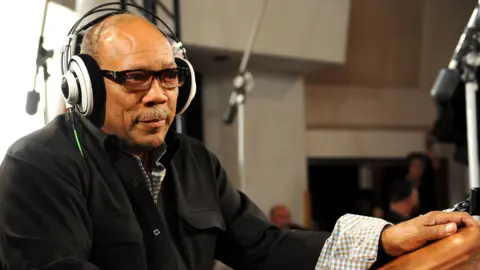 Getty Images
Getty ImagesRecorded by The Lovin’ Spoonful, Summer In The City is a 1960s rock classic, full of ominous organ chords and powerful drum hits that capture the sticky filth of an oppressive heatwave.
Quincy Jones version, recorded for his 1973 album You’ve Got It Bad Girl, is almost unrecognisable as the same song. Lazily chilled-out, the Hammond organ is played with a featherlight touch, and the drums are gently brushed.
Most of the lyrics are excised and, when they arrive at the 2’30” mark, they’re sung with almost heavenly serenity by Valerie Simpson (of Ashford and Simpson fame).
Originally released as a b-side, it’s become one of Jones’s most influential songs. According to WhoSampled.com, it’s been sampled on 87 other songs, including tracks by Massive Attack, Eminem, Nightmares on Wax and The Roots.
5) Dinah Washington – Mad About The Boy
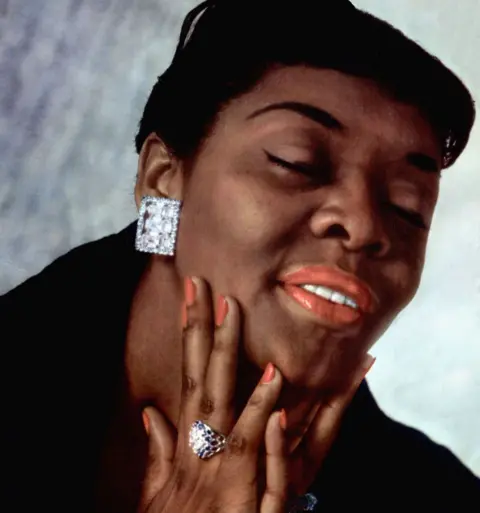 Getty Images
Getty ImagesAnother example of how Jones’s skill as an arranger could completely change a song.
Mad About The Boy was written by Sir Noël Coward, for the 1932 revue Words and Music. In the original, it was sung by four different women, each expressing their love for an unnamed film star (rumoured to be Douglas Fairbanks Jr) as they wait in line to see one of his films.
It’s funny and quirky and clever – but when Dinah Washington covered the song in 1961, Jones slowed it down and switched the time signature from 4/4 to 6/8, allowing the singer to prowl through the lyrics with a newfound carnality.
Overlooked at the time, it gained a new lease of life in 1992 when it was used to soundtrack a Levis advert and crept into the UK charts for the first time.
6) Quincy Jones – Soul Bossa Nova
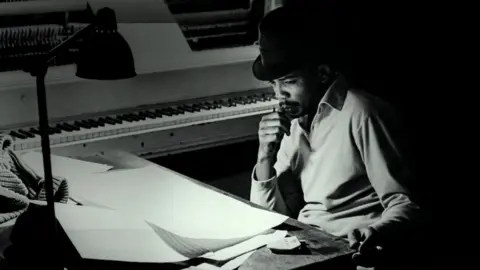 Netflix
NetflixWritten in just 20 minutes, Soul Bossa Nova was inspired by an early-60s fad for Brazilian music, sparked by the success of João Gilberto and Stan Getz’s Desafinado.
Jones is in his element here – with chirruping flutes and big trombone slides that capture the joie de vivre of the carnival. He also makes prominent use of a cuíca, the Brazilian drum that produces what sounds like a very happy monkey in the opening bars.
The bossa-craze may have been short-lived, but Jones’s song endured, most memorably in the opening dance sequence of Austin Powers: International Man Of Mystery.
7) Michael Jackson – Beat It
 Getty Images
Getty ImagesFrom the beginning, Jones and Jackson planned to make Thriller a blockbuster pop album.
“We went through 800 songs to get to nine,” Jones said. “That’s not casual.”
The work was exhausting. At one point, they were working in three studios simultaneously… until the speakers caught fire.
Beat It was crucial to the project – because it was designed to get Jackson played on US rock radio, an unheard of prospect in the heavily-segregated music industry of the 1980s.
Jones had told Jackson to write “a black version” of The Knack’s My Sharona – the 1979 hit song that sold more then 10 million copies. But Jackson was one step ahead. He had a demo that fit the bill, albeit without a hook or lyrics.
While Jackson worked on those elements (you can hear his first, wordless attempt at the melody on his YouTube channel), Jones called on Eddie Van Halen to perform the guitar solo.
“He came in and he stacked up his Gibson [guitars],” Jones later recalled.
“I said, ‘I’m not going to sit here and try to tell you what to play… Let’s try three or four takes. Some of it will be over-animated, some of it will be long, and we’ll sculpt it.
“And he played his ass off.”
The song, with its West Side Story-inspired video, landed just as MTV took off, making Jackson a permanent fixture in living rooms across America.
But for all the commercial focus of the Thriller project, Jones always maintained that the music came first.
“I’ve never, ever in my life done music for money or fame – because that’s when God walks out of the room,” he said.
8) The Brothers Johnson – Strawberry Letter #23
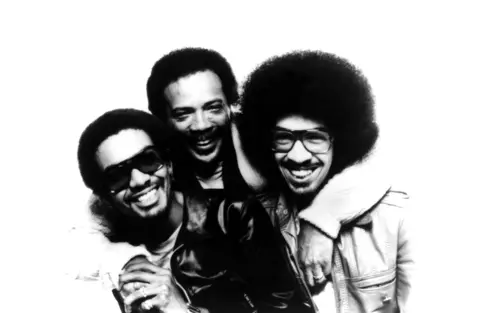 Getty Images
Getty ImagesJones discovered guitarist George Johnson and bassist Louis Johnson when he heard them playing on a demo by Chaka Khan’s sister, Taka Boom.
He hired them to play on the soundtrack for the celebrated TV mini-series Roots, placed them in his touring band, and helmed their 1976 debut album Look Out For #1 (including a sublime cover of The Beatles’ Come Together).
But the brothers didn’t achieve mainstream success until 1977, with the release of Strawberry Letter #23.
Originally recorded by Shuggie Otis, Jones’s version toughens up the production, with a strutting bassline and soaring backing vocals – but George Johnson struggled to recreate Shuggie’s original guitar solo, which was full of complicated triplet notes.
Frustrated, Jones called up session musician Lee Ritenour for help.
“Quincy was walking down the hallway tearing his hair out,” Ritenour later recalled. “He said, ‘I’m going to lunch, Ritenour. Get it done.’
Released in the middle of the punk and disco boom, the song’s romantic psychedelia still found an audience – reaching number 13 in the charts. It was later re-popularised by Quentin Tarantino in the film Jackie Brown.
9) Sarah Vaughan – Misty
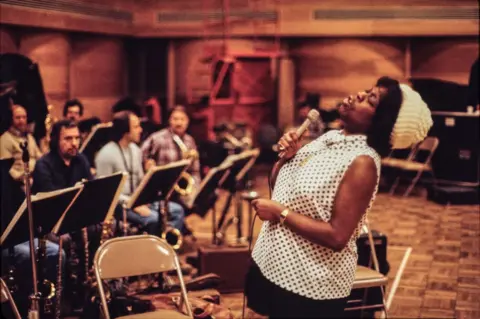 Getty Images
Getty ImagesEarly in his career, Jones was one of the most in-demand arrangers in jazz, working with the likes of Frank Sinatra, Ella Fitzgerald and Peggy Lee.
In 1958, he recorded an entire album with Sarah Vaughan in Paris, backed by a 55-piece orchestra. Among the highlights is the lovestruck ballad Misty – originally recorded by pianist Erroll Garner, and made famous by Johnny Mathis.
Unlike their syrupy and sentimental versions, Vaughan and Jones (along with producer Jack Tracy) give the lyrics some pathos. She might be “as helpless as a kitten up a tree”, but you’re never entirely convinced she’s happy about the situation.
Jones adds beguiling touches – from the cascading strings when Vaughan sings “a thousand violins begin to play”, to the beautifully muted saxophone line, played by Zoot Sims.
When Vaughan died in 2019, Jones posted a long tribute on his Facebook page, using his pet name for her – Sassy.
“Dear sweet Sassy was all about sophistication and chord changes and, man, I’m telling you she thought like a horn and SANG like a horn!” he wrote.
“We had quite the journey together, & I will never forget each moment we had, because every moment was a special one.”
10) USA For Africa – We Are The World
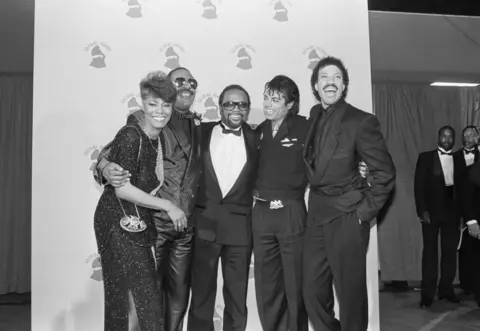 Getty Images
Getty Images“Check your egos at the door,” said the hand-written sign that Quincy Jones pinned to the door of his recording studio in 1985.
The occasion was the recording of We Are The World – a star-studded charity single that aimed to raise money for famine relief in Ethiopia.
Written by Lionel Richie and Michael Jackson, the record featured vocals from Stevie Wonder, Paul Simon, Cyndi Lauper, Bruce Springsteen, Dionne Warwick and Bob Dylan, all recorded in a single night.
Herding the singers was a massive headache, as the recent Netflix documentary The Greatest Night In Pop revealed.
At one point, Stevie Wonder insisted that some of the lyrics should be rewritten in Swahili – despite the fact that the people of Ethiopia, who would be the main beneficiaries of the famine-relief fundraiser, largely speak other languages.
Jones oversaw the whole session with the patience and wisdom of a producer who’d seen it all.
The results aren’t particularly great – the song is sickly and overlong – but the fact that it’s coherent at all is a testament to his skill as a producer, arranger, mentor and referee.
In the end, the song raised more than $63m ($227m or £178m adjusted for inflation); and Jones looked back on it as one of his proudest achievements.
“I have never before or since experienced the joy I felt that night working with this rich, complex human tapestry of love, talent, and grace,” he wrote in his 2002 autobiography.








